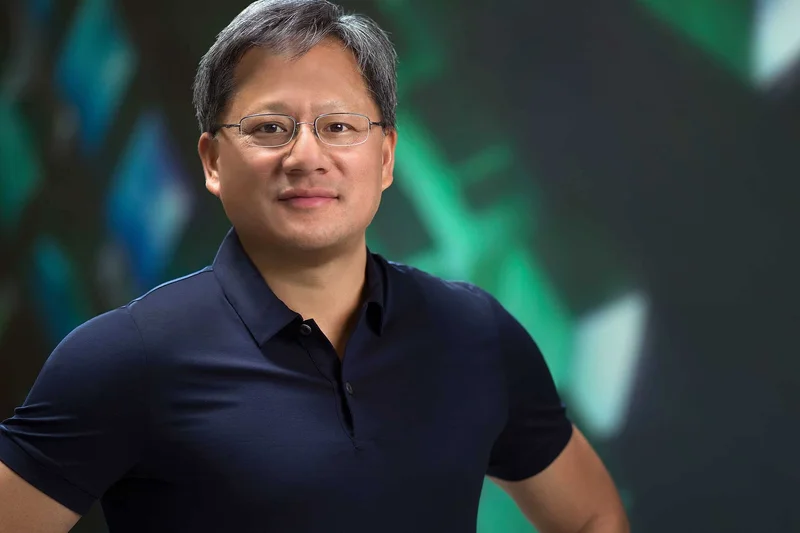Article Directory
We’ve all been swept up in the narrative of the AI revolution. We picture brilliant coders in hoodies, data scientists staring at cascading lines of green text, and algorithms learning in the ethereal, borderless realm of the cloud. It’s a story of pure intellect, of software eating the world. But what if the most important job in this revolution isn't about writing code at all? What if it’s about bending pipes, wiring circuits, and pouring concrete?
Nvidia’s CEO, Jensen Huang—a man who is arguably the chief architect of our AI future—just dropped a bombshell on this conventional wisdom. And when I first read his comments, I honestly just sat back in my chair and smiled. It was a moment of profound clarity. He pointed not to the software engineers, but to the electricians, the plumbers, and the carpenters as the unsung heroes of the next decade. He’s right. And understanding why he’s right changes everything we think we know about the future of work.
The Physical Heart of the Digital Brain
We talk about "the cloud" as if it's a weightless, magical entity floating above us. It’s not. The cloud has a physical address. It’s a data center—or more accurately, it's a global network of massive, power-hungry, hyper-cooled warehouses we might better call cathedrals of computation. These are the factories of the 21st century, and the AI models we marvel at are the products being assembled inside.
This is the point everyone seems to miss. To build an artificial intelligence, you first need a physical place for it to live. A single one of these data centers, according to Huang, can require up to 1,500 construction workers to build. And as the demand for AI explodes, the need for these digital hearts is surging at a pace that is almost impossible to comprehend—it means we are in the middle of one of the largest infrastructure build-outs in human history and most people don’t even see it happening.

Huang says we’re going to need “hundreds of thousands” of skilled tradespeople to erect these structures. These aren’t minimum-wage gigs. In fact, as one report on his comments highlighted, Nvidia CEO Jensen Huang says you can earn six figures without a college degree: Here’s where the money is. Think about that. The engine of our most advanced digital technology is fundamentally dependent on the most tangible, hands-on, and traditional forms of labor. It’s a beautiful paradox. The ghost in the machine, it turns out, is housed in a shell of steel and copper built by human hands. What does this tell us about the skills we should be valuing? What does it mean for a young person today, planning their future?
A New Industrial Revolution Needs New Builders
This isn't the first time technology has reshaped the world through a massive infrastructure project. Think of the transcontinental railroad in the 19th century. It wasn't just about the invention of the steam locomotive; it was about the surveyors, the laborers who laid the track, and the engineers who blasted through mountains. They physically connected a continent, and in doing so, created a new economic reality. We are living through the 21st-century equivalent of that moment.
Jensen Huang’s insight forces us to completely reframe what a "tech job" is. For decades, we've told our children that the path to success runs through a university and ends at a keyboard. We've implicitly, and sometimes explicitly, devalued the skilled trades as a relic of a bygone era. Huang, a man who lives and breathes high-performance computing, is telling us we were wrong. He even noted that if he were a student today, he might focus more on the physical sciences than on software. This is the kind of breakthrough thinking that reminds me why I got into this field in the first place.
This is more than just an economic forecast; it's a chance to recalibrate our societal values. It’s an opportunity to restore dignity and prestige to the essential work of building the world around us. Of course, with this opportunity comes a responsibility. We need to ensure these jobs are safe, that the training is world-class, and that the career paths are clear and respected. But the potential here is staggering. Imagine a future where a master electrician is held in the same high regard as a senior software architect. Because in the world we are building, they are equally critical. They are two sides of the same revolutionary coin.
The Future is Built, Not Coded
For years, the narrative has been that automation and AI would displace human labor. And in some sectors, it will. But the great irony is that the AI revolution itself is creating a massive, un-fillable demand for the one thing a machine can't replicate: a skilled human with a tool in their hand. We've been so focused on the intelligence we're creating that we forgot about the infrastructure it requires. Jensen Huang’s simple, powerful observation is a wake-up call. The future isn't just an algorithm. It's a building. And it needs builders.



